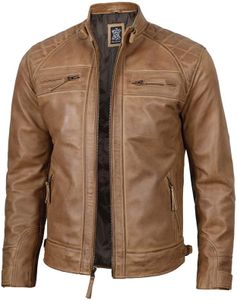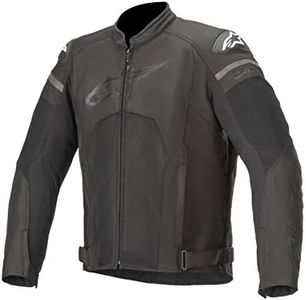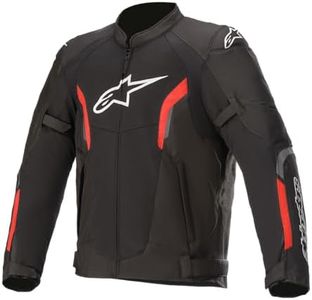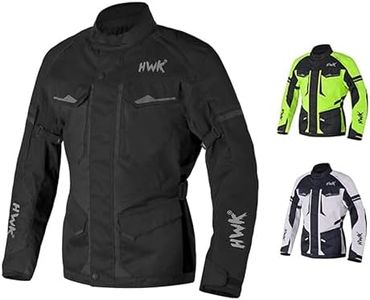We Use CookiesWe use cookies to enhance the security, performance,
functionality and for analytical and promotional activities. By continuing to browse this site you
are agreeing to our privacy policy
10 Best Motorcycle Jackets
From leading brands and best sellers available on the web.Buying Guide for the Best Motorcycle Jackets
Choosing the right motorcycle jacket is essential for your comfort, safety, and overall riding experience. A good jacket not only protects you from the elements, but also provides crucial protection in case of a fall. The best approach is to think about how and where you will be riding, the weather conditions you are most likely to encounter, and the level of protection you need. Understanding the key features will help you narrow down the options and choose a jacket that fits your lifestyle as a rider.MaterialThe material of a motorcycle jacket determines its durability, comfort, and weather resistance. The most common materials are leather, textile, and mesh. Leather jackets offer excellent abrasion resistance, making them a popular choice for safety-conscious riders, but they can be heavy and less breathable, so they are usually best for cool to moderate weather. Textile jackets, made from synthetics like nylon or polyester, are lighter, more versatile, and often come with waterproof or breathable liners, which makes them a suitable option for varied conditions. Mesh jackets prioritize airflow and are ideal for hot weather, but provide less protection. To pick the right material, think about your local climate, the typical length of your rides, and the level of protection you want.
Armor and ProtectionArmor refers to built-in pads or inserts at vital impact points like shoulders, elbows, and back. This armor absorbs energy in a crash, reducing the risk of injury. Jackets might have basic foam padding, CE-rated (certified) armor, or offer the option to add premium protectors. Light or no armor is generally best reserved for very casual or urban riding at lower speeds, medium-level armor suits regular road use, while high-certification armor is ideal for long-distance or faster riding. Consider how much protection feels appropriate for the riding you plan to do and ensure the armor is comfortable without restricting your movement.
Weather ResistanceWeather resistance refers to how well the jacket handles rain, wind, and varying temperatures. Some jackets feature waterproof or water-resistant membranes, removable thermal liners for warmth, or ventilation panels for hot days. If you ride in mixed or unpredictable weather, look for jackets that combine several of these features. For warm climates, prioritize ventilation or mesh panels. For colder or wet climates, removable liners and waterproofing are important. Match these features with your typical riding conditions to avoid discomfort or exposure.
Fit and AdjustabilityFit affects both your comfort and safety. A well-fitting jacket should feel snug but not tight, allowing full range of motion while keeping armor in place. Too loose and protection may shift in a fall; too tight and it will restrict movement or become uncomfortable over time. Many jackets have adjustable straps at the waist, arms, or cuffs, so you can fine-tune the fit. Try on different sizes and adjusters to check for comfort and coverage, thinking about how you’ll layer clothing underneath in various weather.
VisibilityVisibility refers to how easily other road users can see you. Many jackets include reflective panels or bright colors for higher visibility, especially at night or in poor weather. Jackets that are all-black or dark can look stylish but may be harder to see, while lighter or reflective accents help you stand out. If you often ride in low-light conditions, prioritize visibility for extra safety.
VentilationVentilation helps regulate your body temperature by allowing air to flow through the jacket. This feature is key if you ride in warmer weather or work up a sweat during long rides. Look for jackets with zippered vents, mesh panels, or perforations for better airflow. The importance of ventilation depends on your climate—if you mostly ride on hot days, prioritize this feature; if you ride in the cold, you may want fewer vents to keep warmth in.
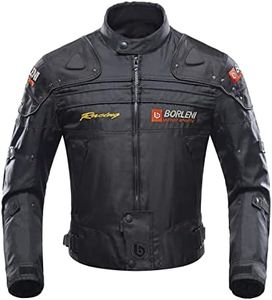
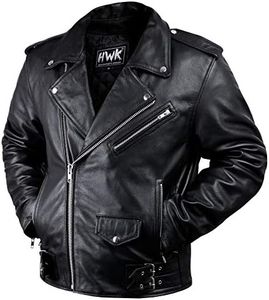

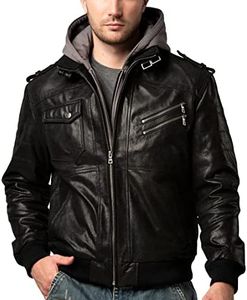
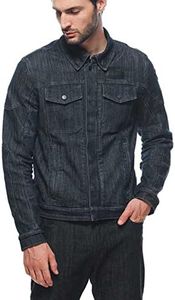
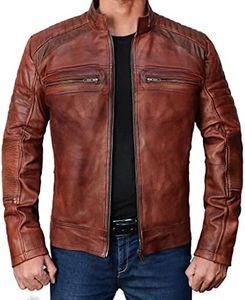
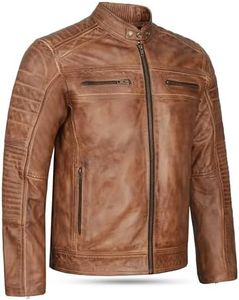
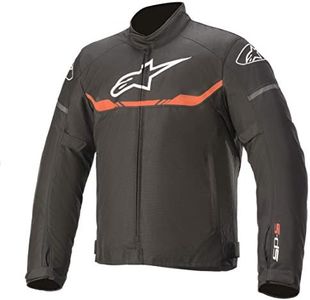
![Decrum Brown Leather Jacket Men - Quilted Moto Jacket Men for Bikers | [1100113] D1 RubOFF, M](https://images-proxy.bestreviews.guide/gIgLULLeUzCXT8jNm-nU_5t9NGU=/0x300/https://m.media-amazon.com/images/I/41ePf9N+82L._AC_CX679_.jpg)
![Decrum Leather Biker Jacket Men - Leather Motorcycle Jacket | [1100083] Diamond 1, M](https://images-proxy.bestreviews.guide/UAI9HIf0dcEDOMfn0z80klYG2nU=/0x300/https://m.media-amazon.com/images/I/516gwflyyjS._AC_CX679_.jpg)
